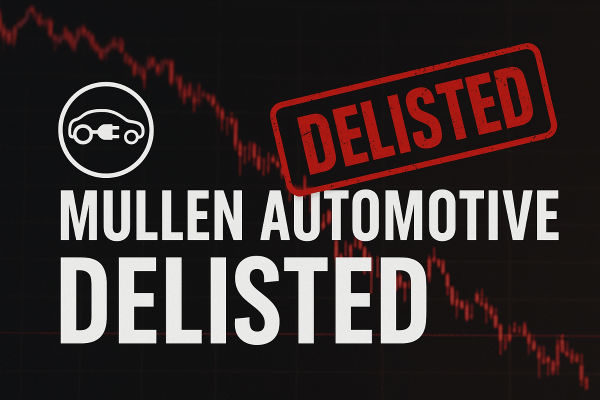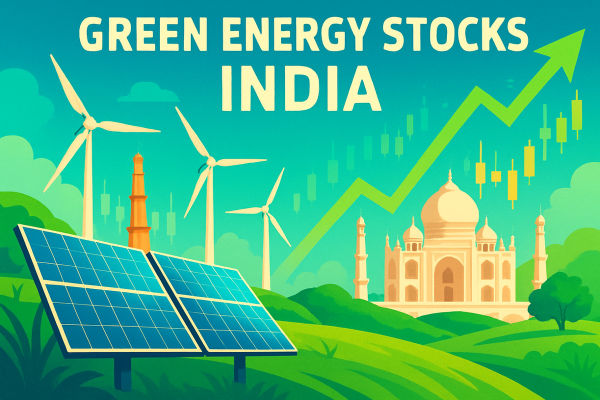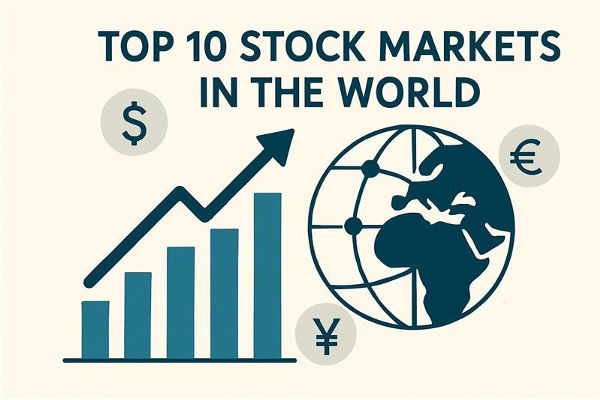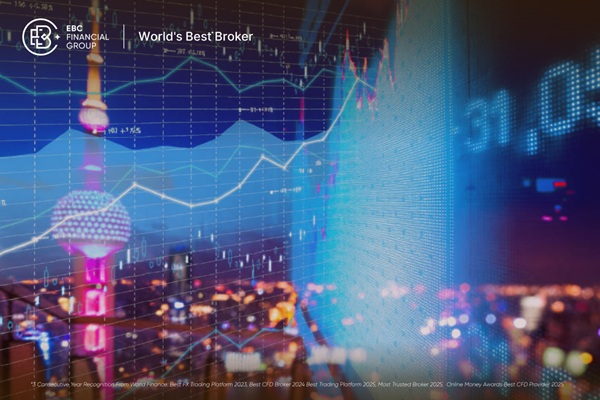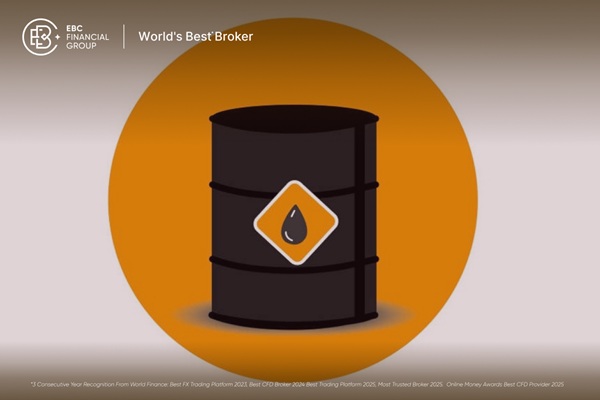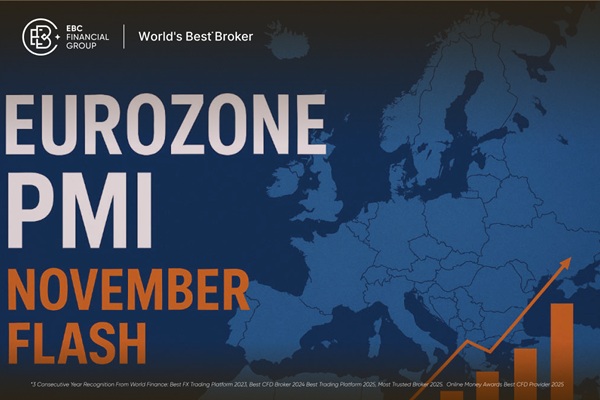India's electric vehicle sector is experiencing rapid acceleration. In FY 2024-25, total EV registrations surpassed 1.97 million units, up from 1.68 million a year earlier. Additionally, two-wheelers alone accounted for ~59% of EV sales in early 2025, reflecting the shift in urban mobility.
For investors in 2025, Tata Motors, Mahindra & Mahindra, TVS Motor Company, Olectra Greentech, Exide Industries / Amara Raja (battery names), JBM Auto, Sona BLW, and select auto-component firms represent the most investible ways to play India's EV transition.
This article explains the reasoning, risk and signals behind each EV stock in India and provides a practical framework for choosing the right mix for your portfolio.
9 Best EV Stocks in India to Buy in 2025
| Company |
Segment Focus |
Price (₹, Oct 2025) |
EV Strength |
Risk Level |
| Tata Motors |
Passenger EVs |
~₹950 |
Market leader, scaling volumes |
Low |
| Mahindra & Mahindra |
SUVs, 3W EVs |
~₹2,345 |
Expanding EV lineup |
Medium |
| TVS Motor |
2W EVs |
~₹2,160 |
Growing market share |
Medium |
| Olectra Greentech |
E-buses |
~₹1,270 |
Gov’t tenders, fleet orders |
High |
| JBM Auto |
E-buses & systems |
~₹1,850 |
Integrated EV player |
High |
| Sona BLW |
Components |
~₹675 |
Global EV supplier |
Medium |
| Exide Industries |
Batteries |
~₹345 |
Li-ion investments |
Medium |
| Amara Raja |
Batteries |
~₹550 |
Energy storage focus |
Medium |
| Greaves Cotton |
2W/3W EVs |
~₹160 |
Turnaround story |
High |
Core Large-Cap Plays (Best for Long-Term Core Allocation)
1) Tata Motors Ltd (TATAMOTORS): The Large-Cap EV Market Leader
Why: Tata Motors leads India's passenger EV market: the Nexon family and new models are driving market share gains. Tata has become the clear market leader in EV registrations and overall passenger vehicle sales in recent months. It makes it the most direct, investible large-cap EV play. [1]
Latest Signals: Tata reported record monthly dispatches and strong EV growth as domestic passenger vehicle dispatches surged and EV volumes rose significantly (e.g., notable monthly highs). The company also announced a corporate restructuring (demerger) in Oct 2025, which has near-term market implications.
Why Investors Like It: Scale, Tata Group backing, diversified commercial and passenger product lines, services and EV software optionality.
Key Risks: Uncertainty from demergers, margin strain due to incentives or fluctuations in raw material costs, and implementation of new electric vehicle models.
2) Mahindra & Mahindra (M&M): Strong in SUVs and Last-Mile EVs
Why: M&M has a solid presence in SUVs and utility vehicles and is pushing into commercial and last-mile electric mobility (three-wheelers and small commercial EVs). It's a cautious method to gain EV exposure while maintaining a robust ICE cash flow.
Latest Signals: Continued investments into EV platforms and reported analyst buy ratings for EV potential. M&M is often listed among the top EV picks by brokers for its diversified manufacturing base.
Key Risks: transition execution, pricing pressure in entry segments.
3) TVS Motor Company (TVSMOTOR): Two-Wheeler EV Momentum
Why: TVS has made aggressive moves into electric two-wheelers (TVS iQube series and upcoming models) and benefits from distribution and brand strength in commuter segments. Two-wheelers are India's largest vehicle market by volume; winning here matters.
Catalysts: New model launches, battery partnerships, and rising EV two-wheeler adoption.
Growth / Mid-Cap Picks (Higher Upside, Higher Risk)
4) Olectra Greentech (Olectra): The E-Bus Specialist
Why: Olectra is one of India's leading e-bus manufacturers, with multiple government and city contracts. As cities electrify bus fleets, Olectra is a direct beneficiary.
Latest Signals: Robust governmental demand for electric buses and ongoing tender successes for both intra-city and intercity e-buses position Olectra as a rapidly growing, government-supported venture.
Risks: project execution timelines, dependence on capex cycles and state budgets.
5) JBM Auto (JBM): Buses, Commercial Vehicles and EV Systems
Why: JBM has diversified into EV bus manufacturing and systems integration. It's a rising player in school buses, commercial buses and last-mile electric mobility. JBM's order book growth tied to contracts can drive revenue expansion.
Catalysts: large fleet contracts, scaling manufacturing for electric buses and commercial EVs.
6) Sona BLW Precision (Sona): EV Powertrain & Motor Components
Why: Sona BLW makes critical EV components (e-motors, e-axles, power electronics). Component suppliers to the entire OEM ecosystem can scale quickly with vehicle production. Sona has partnerships with global OEMs and a growing share of EV component revenues.
Why Investors Like It: Durable revenue visibility via long supplier contracts and high value added per vehicle.
Risks: margin pressure from commoditisation; technological shifts (e.g., inverters vs integrated motors).
7) Exide Industries & Amara Raja (Battery / Energy Players)
Why: Battery manufacturers and energy storage companies are vital to the electric vehicle supply chain. Exide and Amara Raja, along with newer companies like Amara Raja Energy & Mobility, demonstrate their participation in EV batteries in India through their lead-acid heritage and Li-ion technology for electric vehicles.
These names can benefit from both aftermarket demand and OEM supply contracts.
Latest Signals: Broader pushes into lithium-ion cell manufacturing, partnerships and larger capacity investments as India aims for local battery manufacturing.
Risks: Margin pressure, capital intensity, competition from global cell makers, and the supply chain for raw materials (cobalt, nickel, lithium).
Speculative / Small-Cap Picks (High Risk, High Reward)
8) Greaves Cotton: 2W/3W EV Transition & Components
Why: Greaves is pivoting into electric 2W/3W and components; it's a classic small-cap play if EV adoption in lower segments accelerates.
Risk: execution, product acceptance, and fierce competition from incumbents and startups.
9) Motherson Sumi Wiring / Bharat Forge / Component Suppliers
Why: Several auto-component firms (Motherson, Bharat Forge, etc.) supply wiring harnesses, power electronics and chassis components. These companies may play a supporting role in EV expansion and are notable for EV revenue share reports.
Risk: Slower EV share ramp vs ICE volumes; margins tied to OEM pricing.
Why Is EV Stock Thriving in India? 3 Key Reasons Explained
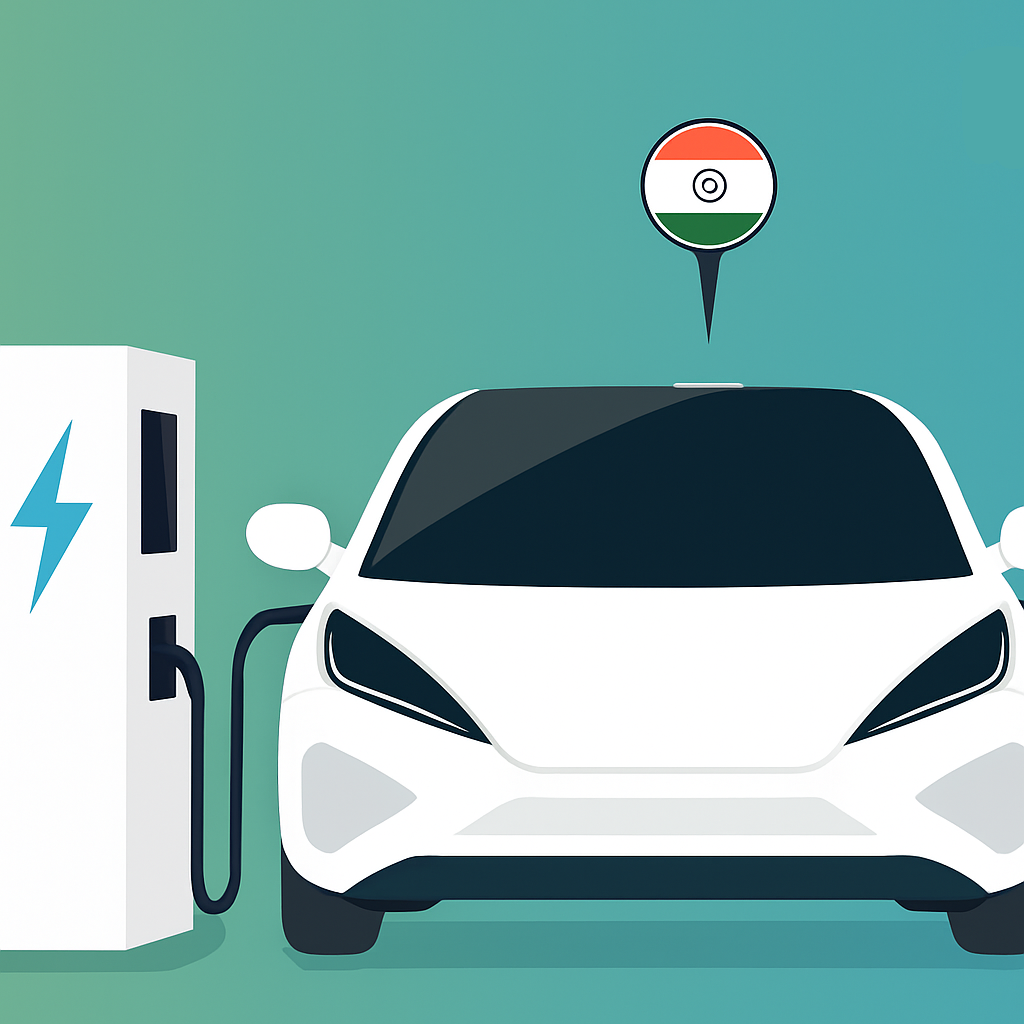
1. Falling Costs & Improving Product Range
Better batteries + more models mean more buyers can switch from ICE to EVs. Tata's monthly dispatch volumes illustrate accelerating consumer adoption.
2. Policy Tailwinds
State and central incentives, manufacturing schemes, and public procurement for buses (electric city buses) create demand visibility for OEMs and battery makers.
3. Charging & Infrastructure Buildout
Rapid expansion of charging networks (public and private) lowers range anxiety for buyers and fleets.
For investors, that combination turns EVs into a multi-year theme: direct EV OEM exposure, battery & cell makers, component suppliers, and fleet/infra players are all part of the investible universe.
India EV Stocks 2025 Outlook: Key Trends to Watch
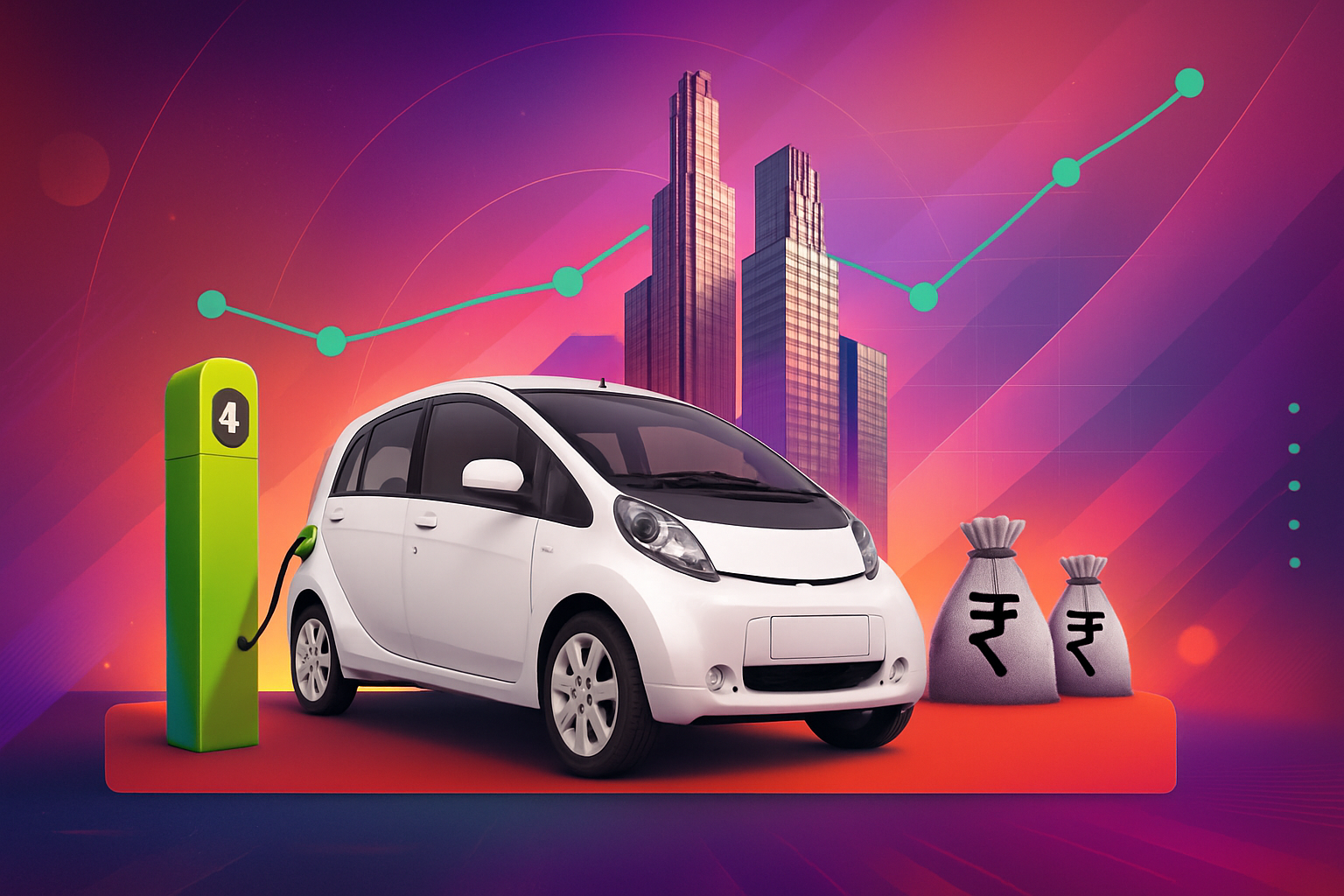
1. EV Penetration Goals
India aims for a minimum of 30% uptake in certain vehicle categories by 2030. The growth in electric two- and three-wheelers will probably pave the path.
2. Declining Battery Costs
Global cell cost forecasts suggest prices could fall below $90/kWh by late 2025, improving margins for both OEMs and component firms.
3. Policy Tailwinds & Subsidies
The next version of FAME ("FAME-III") is expected to boost incentives for the electrification of fleets and infrastructure by mid-2026.
4. Export & Market Diversification
Many Indian EV companies are targeting markets in ASEAN, Africa, and Latin America, capitalising on cost benefits and trade agreements.
5. Raw Material & Supply Risks
A key wildcard remains access to lithium, nickel, cobalt, and rare earth elements. Local mining and recycling policies will influence cost structures.
Risk in Trading EV Stocks
1) Demand Shortfall
If consumer uptake stalls due to macro or price sensitivity, OEMs and parts makers feel it first.
2) Battery Raw-Material Shocks
Quickly increasing costs of lithium, nickel, or cobalt can shrink profit margins.
3) Policy Reversal or Slower Subsidy Rollouts
EV acceleration has policy dependency in many segments (buses, 3W). A slowdown hurts order books.
4) Execution Risk at Small Players
Small OEMs or component companies may fail to scale production or face quality issues.
5) Currency & Import Risk
Many battery components are globally sourced; INR weakness raises costs.
How to Build an Ev-Focused Portfolio?
Conservative Core (For Long-Term Investors):
Tata Motors 35% (large-cap EV leader)
Mahindra & Mahindra 25% (diversified)
TVS Motor 15% (two-wheeler EV exposure)
Exide / Amara Raja 15% (battery exposure)
Cash/infra ETF 10%
Balanced Growth (Moderate Risk):
High-risk/speculative (small investors only):
Small positions in Greaves, Olectra, Sona, JBM and a battery specialist. Each 5–10%, plus core holding in Tata Motors, 30%.
Frequently Asked Questions
1. Which Single Stock Gives the Broadest EV Exposure in India?
Tata Motors. Its leadership in electric passenger vehicles, enhancing market share, and a varied product lineup establish it as the top core EV representation for most investors. [2]
2. Are Battery Makers a Better Bet Than OEMs?
Battery makers can offer higher leverage to EV growth, but they are capital-intensive and riskier. Consider a mix of one OEM + one battery play to balance risk.
3. Should I Buy Small EV Maker Stocks or Stick With Large OEMs?
Small names carry significant potential but also considerable execution risk. For most retail investors, having a base of major OEMs combined with a small speculative investment in mid/small caps is prudent.
Conclusion
In conclusion, India's electric vehicle sector is no longer a distant dream; it's a multi-billion-rupee opportunity reshaping the country's auto and energy landscape.
For investors in 2025, Tata Motors remains the core EV leader, supported by strong market share and execution, while battery makers like Exide and Amara Raja provide diversification into the energy storage backbone.
In a market driven by innovation and sustainability, India's EV transition offers both risk and reward; the key is disciplined, data-backed investing.
Disclaimer: This material is for general information purposes only and is not intended as (and should not be considered to be) financial, investment or other advice on which reliance should be placed. No opinion given in the material constitutes a recommendation by EBC or the author that any particular investment, security, transaction or investment strategy is suitable for any specific person.
Sources
[1] https://gaadiwaadi.com/tata-sep-2025-sales-analysis-nexon-punch-tiago-tigor-harrier-curvv/
[2] https://economictimes.indiatimes.com/industry/auto/auto-news/tata-motors-speeds-past-hyundai-mm-to-2nd-spot-in-pv-race-extends-lead-over-jsw-mg-in-ev-registrations/articleshow/124265628.cms








